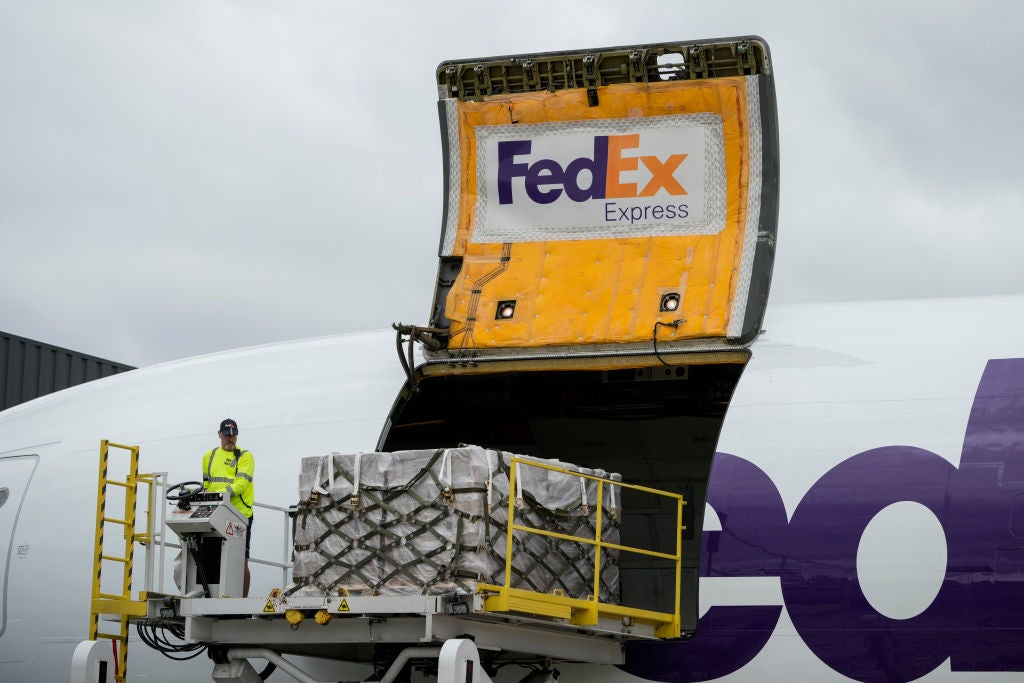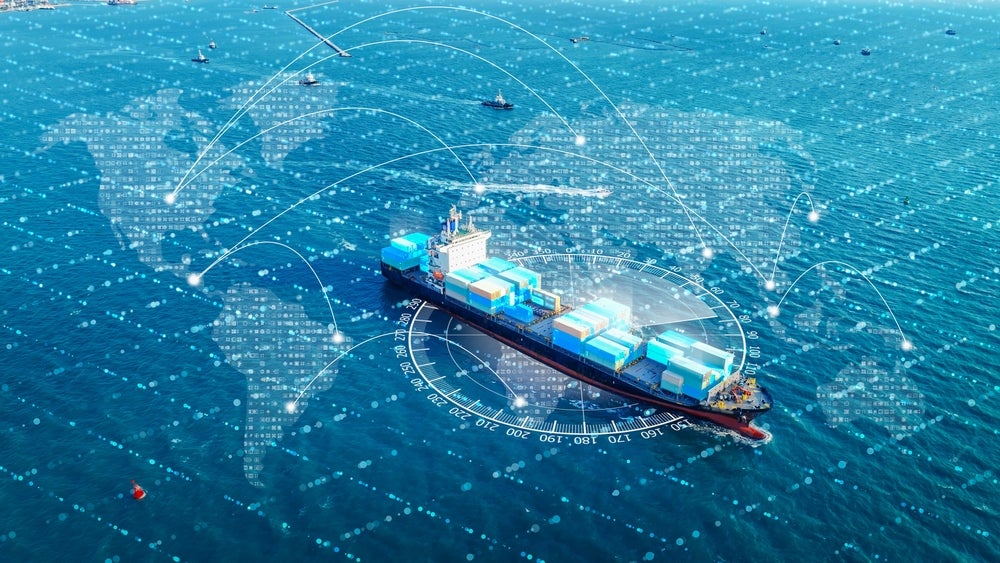
The Covid-19 pandemic caused overall greenfield foreign direct investment (FDI) project numbers to decline by 17.4% in 2020. Most sectors were negatively impacted, with lockdowns making site selections almost impossible. Companies were also worried about what the future would hold. Investment in the logistics sector, however, increased as industries such as e-commerce boomed.
When it comes to greenfield logistics FDI projects, our database shows that there were 926 projects in logistics in 2020 – the year that the pandemic was declared – up from 830 the year before.
How well do you really know your competitors?
Access the most comprehensive Company Profiles on the market, powered by GlobalData. Save hours of research. Gain competitive edge.

Thank you!
Your download email will arrive shortly
Not ready to buy yet? Download a free sample
We are confident about the unique quality of our Company Profiles. However, we want you to make the most beneficial decision for your business, so we offer a free sample that you can download by submitting the below form
By GlobalDataOut of the 1,756 logistics projects tracked over this two-year period, the majority (79.3%) were new projects and the rest were expansion projects.
Where are the leading destinations for logistics FDI?
Western Europe was the leading region when it came to attracting FDI projects in logistics in 2019 and 2020, with 38.8% of all projects announced or opened globally.
Investments in central and eastern Europe and the Commonwealth of Independent States saw the largest growth in logistics projects. Greenfield projects rose by 42.4% in the region in 2020. The region overtook Asia-Pacific as the second-largest destination region in 2020.
Germany overtook the US to become the leading destination country for logistics FDI in 2020. It received 98 inbound logistics projects, significantly more than the US (64). Of the top destination markets, only Poland exhibited stronger growth in logistics FDI than Germany. Investments into Poland almost doubled (97%) between 2019 and 2020.
The US was the leading country in 2019. Investors created 61 projects, which was slightly more than Germany (57). In 2020, logistics FDI into the US grew slightly (5%). China and Mexico witnessed the sharpest declines. Logistics FDI into China fell by 52% in 2020, while projects into Mexico fell by 59%.
In 2020, the leading countries when it came to investing in Germany were the US (20 projects), Denmark (13) and the Netherlands (eight).
Amazon announced nine FDI projects in Germany in 2020. The US-based e-commerce company was focused on building logistics and distribution centres across Germany, creating more than 1,000 jobs. Additionally, Amazon Air, the cargo airline operating exclusively to transport Amazon packages, opened a new air cargo facility at Leipzig/Halle Airport in Schkeuditz. The 20,000m2 facility adds an additional connection within Amazon’s fulfilment network in Europe. The facility created more than 200 jobs and had begun to support customer deliveries with two daily flights in November 2020.
Denmark-based DSV acquired Panalpina World Transport in 2019, creating a new holding company, DSV Panalpina. The new entity announced a splurge of investments in Germany in 2020. The company’s air and sea division announced the creation of five new branches, while its road division announced two new offices and a cargo depot. An additional distribution centre was also announced in Duisburg, creating more than 300 jobs.
What are the top logistics FDI operations?
Logistics and warehousing is the primary business operation for foreign investors in logistics. This includes creating logistics centres, distribution facilities and warehouse storage. In 2020, 592 projects were created with a logistics function, up 32% from 2019. Office establishments were the next most popular business operation. However, the number of office openings actually fell by 16% in 2020 when compared with 2019. The pandemic caused a spike in requirements for facilities to house and distribute products as online purchasing soared.
Across the 2019–20 period, Poland was the leading destination for logistics and warehouse operations, with 57 projects recorded, just edging out Germany (55). The UK (48) and US (45) were also popular destinations.
In 2020, Japan-based Nissin Corp announced plans to open a warehouse in Park Bydgoczcz II in Poland through its subsidiary, Nissin Logistics Poland. The 37,000m2 building includes an 18,295m2 warehouse. Between 200 and 300 new jobs were created as part of the project. The company chose Bydgoszcz for expansion due to its connectivity of shipping, rail, air and road transport.
What are the top subsectors for logistics FDI?
Logistics FDI typically encompasses more than one transportation function. For example, distribution centres can receive goods by air or sea, store them and then transport by road to shops for selling. Given this, it is unsurprising that multimodal transport is the leading logistics subsector by some margin. More than 1,000 projects were created in the subsector in 2019–20, and the number of projects increased by 27% in 2020. Although some other subsectors, such as air and rail transportation, saw sharp declines in 2020, it is likely that the single-mode operations were covered as part of the multimodal approach. Multimodal transportation accounted for almost two-thirds of global logistics FDI in 2019–20.
FedEx created 2,500 new jobs in Canada in 2020, representing its largest ever hiring phase in the country. The increased workforce was a result of increased demand across a range of logistics functions.
Similarly, DHL Express, the US subsidiary of Deutsche Post, expanded its workforce in the US by creating approximately 3,000 jobs. Some 1,000 jobs were created at its DHL Express operations, about 500 new customer service roles, and about 1,500 jobs for ground pick-up and delivery couriers in the country.
Where are the leading logistics investors located?
Investment Monitor's analysis shows that Germany was the leading source market for outbound logistics FDI in 2019–20. However, the number of outbound projects from German companies fell in 2020. There were 153 outbound projects created in 2020 compared with 169 in 2019 – a 9.5% decline.
Although outbound project numbers in the US, the second-largest source market for logistics FDI, grew by more than one-third in this time, it was still ranked below Germany.
Within the top ten countries, Denmark and the UK showed the largest annual growth. Danish companies created 62 projects in 2020, a growth of 68%, while UK-based companies created 74 outbound projects – 64% higher than in 2019.
Germany-based companies invested in 322 projects between 2019 and 2020. German companies targeted greenfield operations in the US, creating 39 projects. Europe was also a key market, with 31 projects created in Poland, 26 in the UK and 22 in France.
Germany-based Deutsche Post was the leading foreign investor. The company announced or opened 129 projects between 2019 and 2020, primarily through its DHL country subsidiaries. Most operations were logistics, distribution or warehousing.
US-based United Parcel Service (UPS) and France-based La Poste were also leading investors, with each company creating 48 projects in 2019–20. The German arm of UPS announced plans to open a European hub, a high-tech facility in Langenhagen, Germany. The company is investing $172m in the new facility. The project, covering an area of 24,000m2, will be implemented in two phases and is expected to complete by the end of 2023. The company is creating 500 new jobs in operations and administration.
La Poste announced multiple expansions through its DPD subsidiaries. In the UK, DPD announced plans to invest $275.5m to open 15 new regional depots. Around 6,000 jobs will be created across a range of functions.
Investment Monitor expects logistics FDI to smooth out in 2021, falling slightly to reach similar levels experienced in 2019. This is more because 2020 is an anomaly than a worrying sign for the industry. The huge spike in demand for online goods and services caused the logistics sector to require more space to facilitate storage and movement of goods. The industry is still buoyant and the trend of the movement towards multimodal transportation FDI driving the sector will continue. The continued supply chain issues will also lead to the creation of logistics facilities closer to customer centres.








